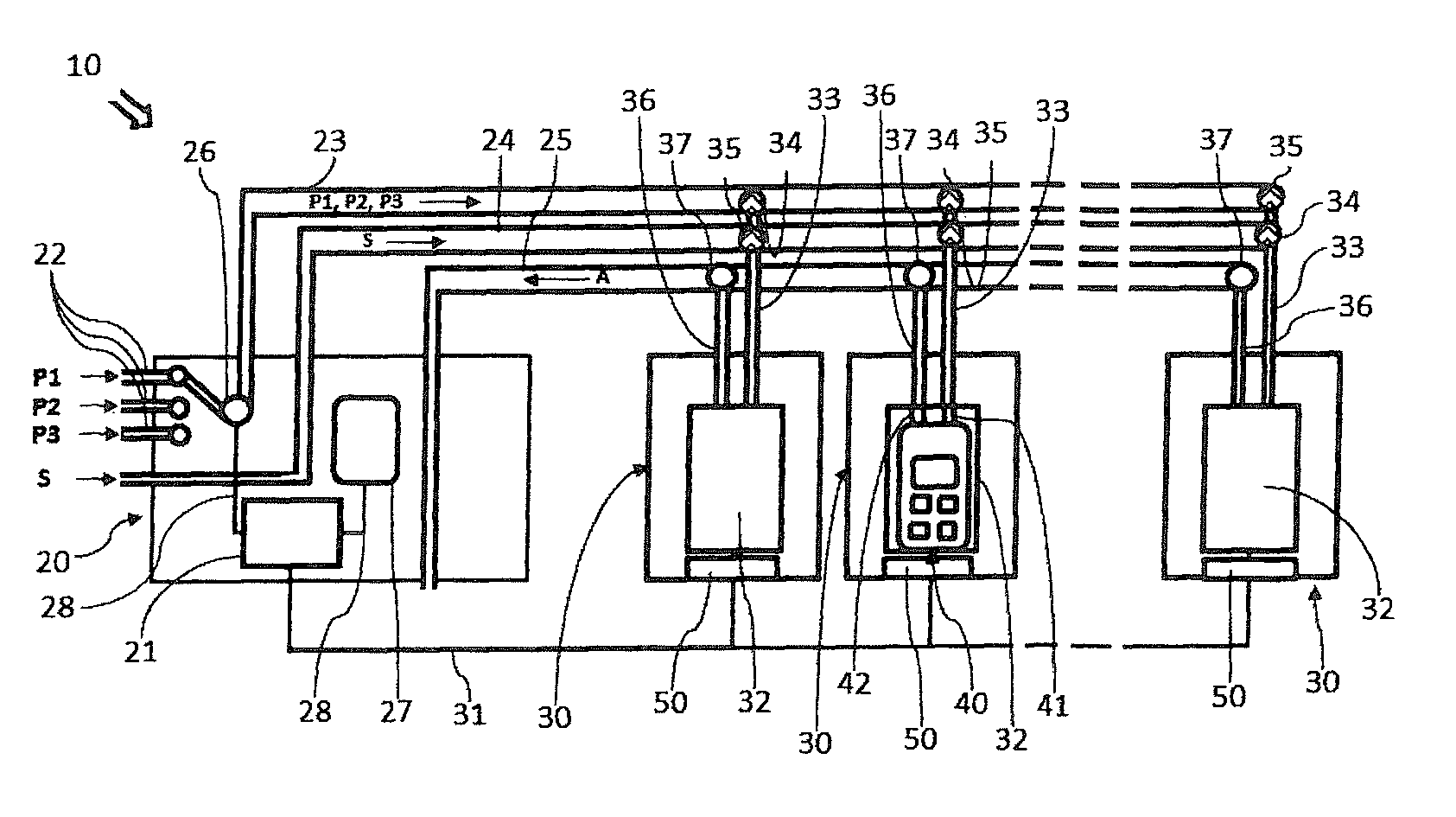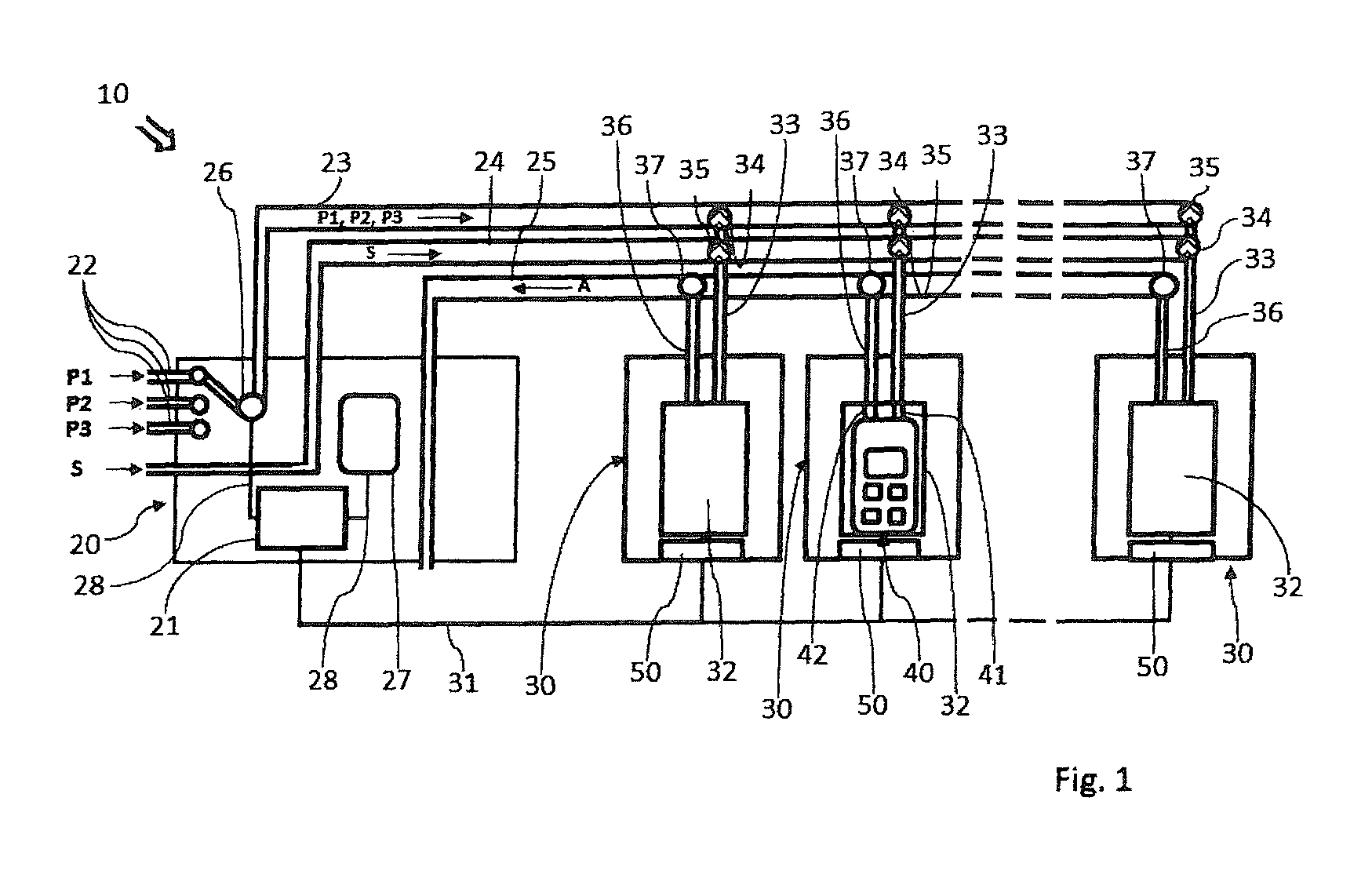Method for recognizing sensor poisonings and test station for carrying out the method
a sensor and detection method technology, applied in the field of detection methods of sensor poisonings and test stations for carrying out the methods, can solve the problems of sensor damage or poisoning above all, sensitivity does not decrease uniformly for all recognized gases, and the risk of incorrect estimation of the present concentration of a gas can be reduced
- Summary
- Abstract
- Description
- Claims
- Application Information
AI Technical Summary
Benefits of technology
Problems solved by technology
Method used
Image
Examples
Embodiment Construction
[0087]Referring to the drawings in particular, a test station 10, which has a main unit 20 and a plurality of test modules 30, is recognized in FIG. 1. The number of test modules 30 is variable. A control and analysis unit 21 is arranged in the main unit 20. The control and analysis unit 21 is connected with an output unit 27 and with a port 26 via data exchange means 28. The output unit 27 is likewise arranged in the main unit 20. However, according to an alternative embodiment, the output unit 27 is a component separate from the main unit 20. The port 26 can be connected with a plurality of gas inlets 22 arranged in the main unit 20. A test gas P1, P2, P3 can flow through each of the gas inlets 22, and a separate gas inlet 22 is preferably provided for each test gas P1, P2, P3. The number of gas inlets 22 is variable, and the three gas inlets 22 shown in FIG. 1 are merely exemplary. More or fewer gas inlets 22 may also be present in alternative embodiments.
[0088]Port 26 is connect...
PUM
| Property | Measurement | Unit |
|---|---|---|
| LEL | aaaaa | aaaaa |
| LEL | aaaaa | aaaaa |
| concentration | aaaaa | aaaaa |
Abstract
Description
Claims
Application Information
 Login to View More
Login to View More - R&D
- Intellectual Property
- Life Sciences
- Materials
- Tech Scout
- Unparalleled Data Quality
- Higher Quality Content
- 60% Fewer Hallucinations
Browse by: Latest US Patents, China's latest patents, Technical Efficacy Thesaurus, Application Domain, Technology Topic, Popular Technical Reports.
© 2025 PatSnap. All rights reserved.Legal|Privacy policy|Modern Slavery Act Transparency Statement|Sitemap|About US| Contact US: help@patsnap.com



